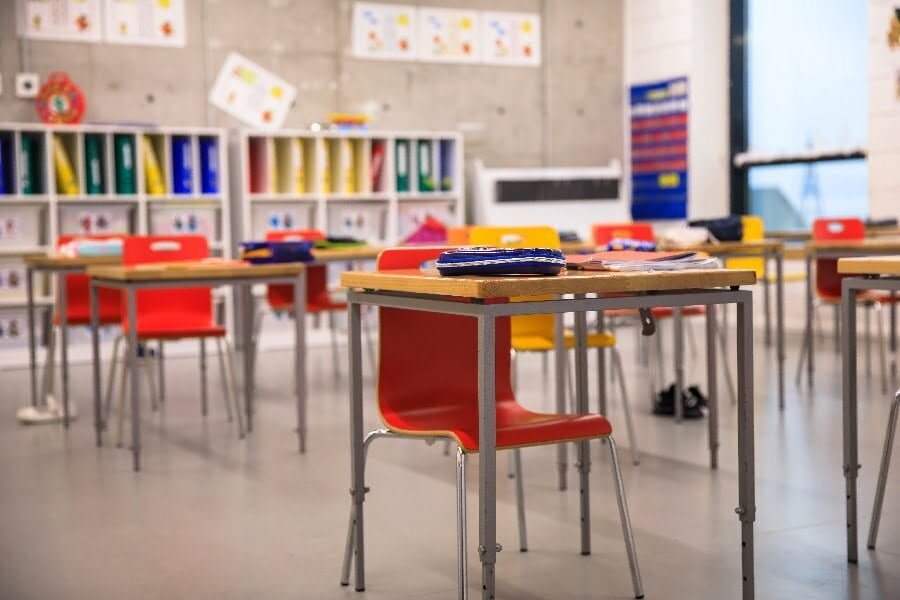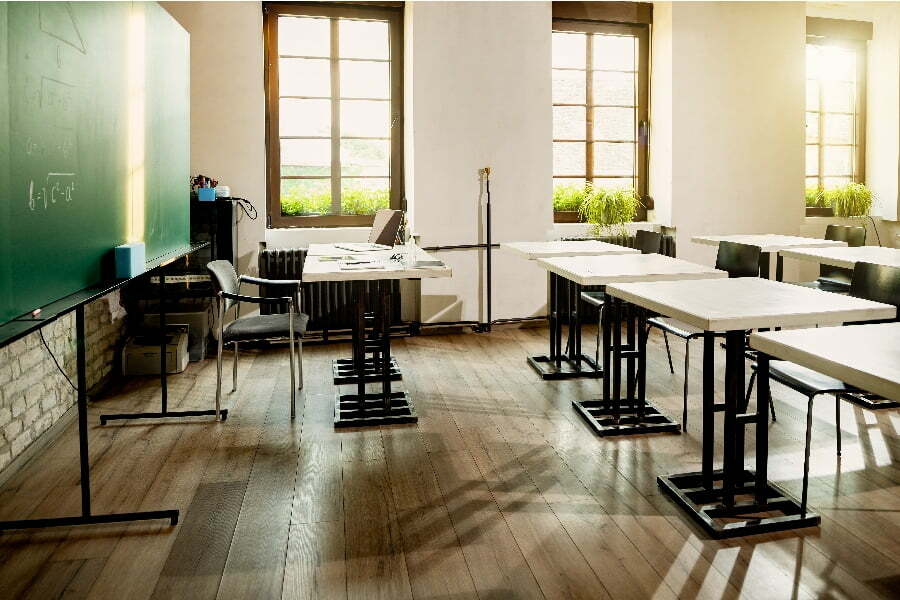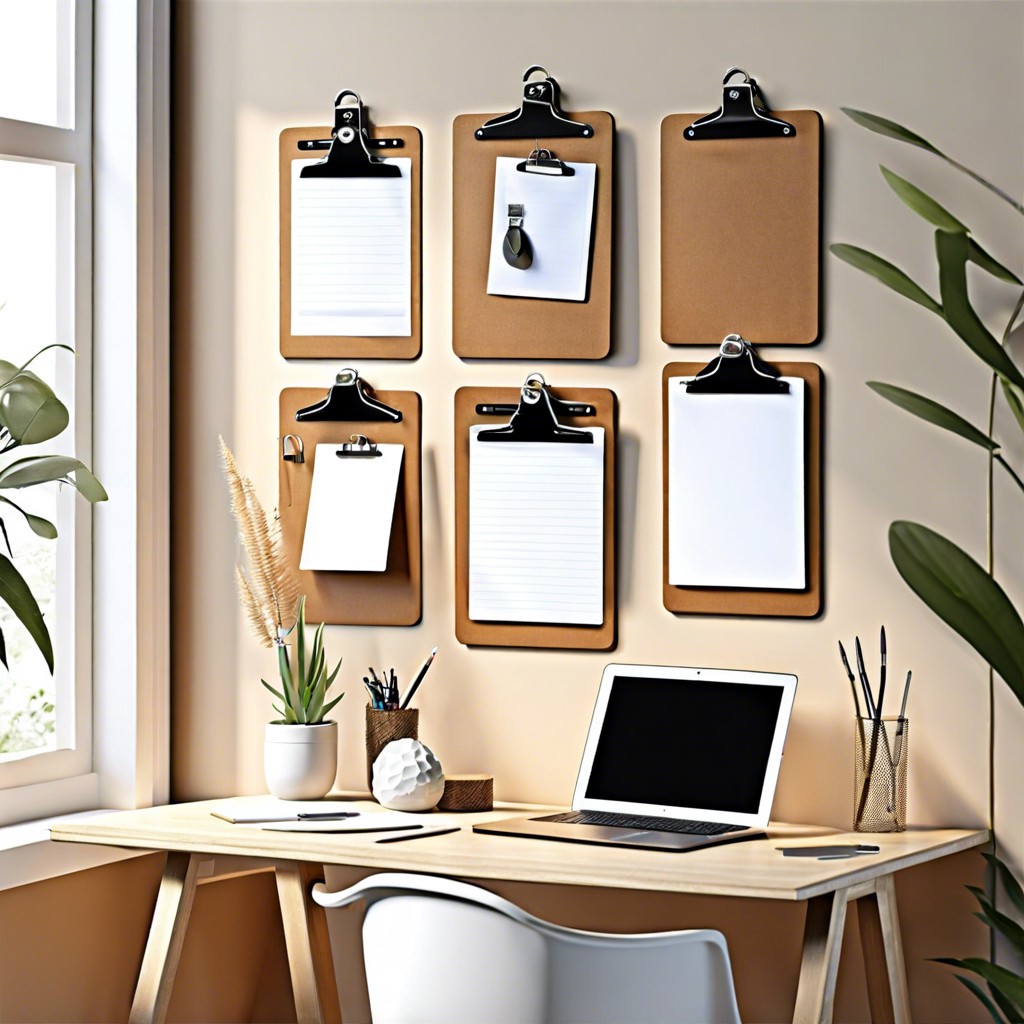Last updated on
Consider these ideas to decorate a classroom for maximum comfort. Read on!
Decorating a classroom is great for creating an aesthetically engaging environment, but also super important for students’ comfort physically and mentally.
So whilst decorating can help present information in a fun way, your primary goal when kitting out a classroom is keeping a good level of comfort to allow students to focus on learning without distractions.
Why Is Comfort So Important?

To make sure you fully understand why it’s important to think carefully about the decoration of your classroom, you need to know how a classroom can affect students. Studies have shown that a child is more willing to learn and engaged with the teacher in a more relaxed environment.
If a child’s uncomfortable, they’ll be focusing on the stress of the discomfort rather than learning. This is why you should bear in mind a student’s comfort when it comes to things like decorating.
What to Consider

Consider these things to maximize comfort.
Furniture
These are arguably one of the most important things to ensure students are comfortable while working. Because students are growing and different rates, using adjustable tables and chairs can be a crucial way of maximizing their comfort – sitting at the wrong-sized desk can be extremely harmful to the back and neck which can cause lasting pain and damage.
Also if you can, with the supply of school tables, arrange them in a collaborative way (such as in a horseshoe shape, or in groups of 4) which will encourage students to be comfortable in sharing their thoughts and ideas. Don’t forget to sit students with visual impairments closer to whiteboards and anything else they might have to read or watch.
Having a locker, drawer, hanger and/or desk of their own to place their things can also provide comfort. Placing their personal items somewhere means they are less distracted and can ease their mind about where their belongings are.
Also, having their own desk can provide a familiar and ‘safe’ space that feels like it’s there’s, which can also contribute to their comfort. An activity you could try is creating name labels for their designated places.
Decorating Walls
When decorating and designing a classroom, it’s not just physical comfort you need to consider, but mental and emotional comfort too. Displaying children’s work, such as paintings, can greatly boost their morale and they can take pride in what they’ve achieved.
This can continue to motivate them every time they see it, and allows them to relax into future work, knowing they did a good job. It’s important to bear in mind that not every child likes this, so do speak to them before to see if they are happy with you displaying their work.
Switching up these decorations is important as well, to keep things fresh and interesting. Changing out posters, facts and information grabs students’ attention and keeps their heads in the classroom – doing it more often sustains their engagement.
Calming Colors
Different colors can evoke different feelings and reactions, as well as have the ability to shift the emotional state of an individual. Painting walls specific colors can be utilized to help create different responses in students, depending on the type of lesson.
For example, using oranges can elicit feelings of energy and enthusiasm – this could be well used in drama rooms, to encourage creativity and where it doesn’t matter too much if kids become overexcited or loud.
Whereas, blues incite calmness and focus, which might be well used in math or science, where children will be listening to a teacher for most of the lesson.
Relaxing Areas
As mentioned before, students learn better in a relaxed environment. In the home, children have places they can spend time by themselves, and this should be the case in school too.
Students will have a greater level of comfort if there are designated spaces for private time, which could be a comfortable beanbag for example. Reflecting on some home designs could encourage children to be relaxed and open in their learning too.
Light
Dim rooms have been linked to slower reading and reduced concentration, but overlit rooms have been shown to cause hyperactivity and reduce visual performance as well. Glare can also cause students to squint or adjust the angle of their heads, which can cause headaches and neck pains.
Ensure that there are no flickering lights, which could trigger epileptic seizures. You can manipulate the light in a room in many ways, like by using mirrors as a way to reflect natural light and create the illusion of space. Be careful not to overuse or misplace these though, because they can become distracting to students. Don’
So it’s important to maintain a good balance of light and preferably with as much natural light as possible, which has been shown in studies to improve test scores by a substantial amount.
So avoid covering windows up with decorations, and make sure to keep the blinds back if you can (but watch for the sun that could cause glares on screens). If there is a lack of natural light, then you should decorate the room with artificial lights that mimic natural sunlight, which will have the same benefits for the children.
Space
Be careful to not get overexcited when decorating your classroom, overcrowding areas can cause it to look cluttered. Ever heard of ‘tidy house, tidy mind’? The same goes for classrooms too.
Having enough room to move about is also vital in giving students enough personal space to work freely without being too near another student, or anything else that could get in their way.
Speak to the Students

Getting the students involved in decorating is one of the greatest ways to find out what kind of environment they’d be comfortable in. This also creates collaborative and project-based learning, which can teach many qualities and skills.
Overall, the decoration of your classroom can make a big impact on a student’s comfort and, consequently, their learning. The furniture should be at the right height, otherwise, this can contribute to bad posture and cause major discomfort.
Decorating the walls is a fun idea, but be careful not to cover windows and natural light, and think about the colors and how they might influence a child’s state of mind.
Recap




